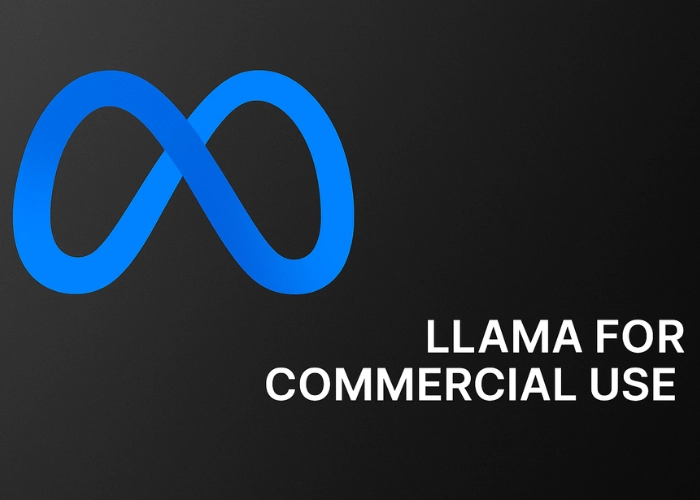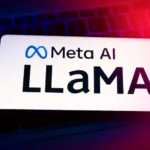Meta’s Llama AI has ignited a revolution in the enterprise, offering performance that rivals top proprietary models. But for business leaders, strategists, and legal teams, the most important question isn’t about benchmarks—it’s about the rules of engagement. Can you use Llama AI for a commercial product? What are the legal obligations? And what strategic advantages—or risks—does it present?

Deconstructing the Llama 4 Commercial License
The foundation of using Llama for business is the Llama 4 Community License Agreement. It is not a traditional open-source license; it is a sophisticated legal instrument designed to build a commercial ecosystem on Meta’s terms. Understanding its clauses is the first step for any enterprise.
What You Can Do: Your Core Commercial Rights
At its heart, the license is permissive, granting your business a royalty-free, worldwide right to:
- Use the Llama models in your commercial products and services.
- Create modifications and derivative works (like fine-tuned models).
- Reproduce and distribute the models and your derivative works.
This grant is the core reason Llama is so attractive for enterprise use—it provides a powerful foundation for building commercial AI products without upfront licensing fees.
What You Must Do: Your Key Business Obligations
This freedom comes with several key obligations that directly impact your business, branding, and legal posture.
- The 700 Million MAU Gatekeeper: If your product or service has more than 700 million monthly active users, you cannot use Llama 4 without a separate, special license from Meta. This is a strategic clause designed to prevent hyperscale competitors from leveraging Meta’s R&D. For virtually all startups, SMEs, and even most large enterprises, this limit is purely theoretical.
- Mandatory Attribution: You must provide attribution. Any product built using Llama must prominently display the phrase “Built with Llama” on a related website or within the application’s interface.
- Derivative Model Naming: If you fine-tune a Llama model and distribute that new model, its name must start with “Llama”. This is a powerful branding requirement that ensures every successful derivative expands Meta’s ecosystem footprint.
- Liability and Indemnification: The models are provided “AS IS.” Your business assumes all risks, and you must agree to indemnify and hold Meta harmless from any third-party claims that arise from your use of the models. This transfers downstream liability entirely to the implementer.
The “Source Available” Distinction
It is critical for legal and compliance teams to understand that Llama 4 is not technically “open source” according to the formal Open Source Definition (OSI). Due to the commercial restrictions like the MAU limit, it is more accurately classified as “source available.” While it feels open for most users, this distinction is important for internal governance and compliance policies regarding open-source software.
Navigating Global Regulations: The EU Restriction
One of the most complex commercial considerations is Llama 4’s specific and controversial restriction targeting the European Union.
This licensing choice creates a geopolitical fault line for AI development and is a pioneering act of “regulatory arbitrage.” It effectively shifts the direct compliance burden for the EU AI Act from Meta to its large cloud partners, who have the resources to manage the risk of offering AI services in the EU. For businesses operating in or selling to the EU, this means your path to using Llama will likely be through a managed API from a US-based provider, a crucial factor for your GTM and compliance strategy.
Intellectual Property: A New Value Chain for Your Business
One of the most powerful commercial aspects of Llama is its clear stance on intellectual property, which creates significant business opportunities.
Who Owns Your Custom AI? You Do.
The Llama 4 license explicitly states that while Meta owns the original models, your business owns the modifications and derivative works you create. If you invest in fine-tuning Llama 4 with your proprietary data to create a specialized legal or medical AI, that resulting IP—the “incremental changes”—belongs to you.
This is a monumental advantage over proprietary APIs, where your data only serves to improve the provider’s model. With Llama, your data and effort build a defensible, ownable asset for your company.
The Emerging Market of Specialist Fine-Tuners
This ownership model has given rise to a new market of companies that specialize in fine-tuning Llama for specific industries. These companies can then apply their own, often more restrictive, licenses to their value-added models.
This presents both an opportunity and a risk. Your business could partner with or become one of these specialists. However, it also means you must perform due diligence on the entire license chain when using a third-party fine-tuned model to ensure compliance with both the base Llama license and the fine-tuner’s specific terms.
Proven Commercial Applications: How Enterprises Create Value with Llama
The strategic value of Llama is not theoretical. Businesses across the globe are deploying it to drive revenue, cut costs, and create innovative new services.
- In Customer Service, Llama is a proven cost-cutter and performance-booster. AT&T improved customer care responses by 33% by analyzing support trends, while conversation analytics platform Convirza achieved a staggering 10x reduction in operational costs by migrating from OpenAI to Llama.
- In Financial Services, where data sovereignty is paramount, Llama is a natural fit. Goldman Sachs uses Llama within its secure internal AI platform for document analysis, and Nomura leverages it for a range of tasks including code generation and text summarization, citing transparency and robust performance as key benefits.
- In Healthcare, Llama enables secure, specialized solutions. The Brazilian AI company Sofya built its entire clinical support system on Llama, ensuring data security and achieving a 90% customer satisfaction score. Llama’s ability to match proprietary models in diagnosing tough medical cases underscores its potential.
- In E-commerce, Llama’s multimodal capabilities drive direct revenue. Shopify uses a Llama-based vision model for millions of daily inferences to enrich its product catalogs. One platform saw a 43% increase in conversion rates by implementing Llama 4 for visual product matching.
These use cases demonstrate a clear pattern: enterprises are choosing Llama when control, customization, and cost-efficiency at scale are strategic priorities.
Governance & Risk Management for Enterprise Use
Deploying Llama commercially requires a robust governance framework to manage risk. Meta provides tools and policies to support this.
The Acceptable Use Policy: Defining the Boundaries
The license is conditional on adherence to the Acceptable Use Policy (AUP). This policy contractually prohibits using Llama for a range of harmful activities, including illegal acts, hate speech, disinformation, and providing unauthorized professional advice in regulated fields like law and finance. For any business, reviewing and integrating the AUP into your internal compliance framework is a mandatory step.
Llama Guard 4: Platform-Native Safety
To help businesses enforce the AUP, Meta provides Llama Guard 4, a dedicated safety model. Think of it as a platform-native toolkit for risk management. It functions as a classifier to identify and flag harmful content in both prompts and responses, enabling you to build safer applications and reduce reputational and legal risk.
Data Privacy as a Business Decision
Llama’s massive context windows force a strategic decision about data privacy. Feeding entire sensitive documents into a model, especially a third-party API, presents a significant data exposure risk. This makes Retrieval-Augmented Generation (RAG) a critical business strategy. By using RAG to retrieve only small, relevant snippets of information from a secure internal knowledge base, you can leverage Llama’s power while minimizing data exposure and maintaining compliance with regulations like GDPR. The choice between RAG and large context is not just technical; it’s a fundamental decision about your company’s risk posture.
The Final Verdict: Is Llama the Right Strategic Choice for Your Business?
Choosing Llama is a strategic platform decision. It’s about more than technology; it’s about control, ownership, and your place in the future AI ecosystem.
Llama 4 is the right choice for your business when your competitive advantage comes from deep customization on your proprietary data, when data sovereignty and control are non-negotiable due to regulation or policy, and when you are building for a scale where the total cost of ownership of a custom asset is more attractive than perpetual API fees.
It represents a move from “renting” AI capabilities to “owning” them. By commoditizing the model layer, Meta has enabled a new wave of businesses to build defensible, valuable AI assets. For companies ready to embrace this new paradigm, Llama AI is not just a tool for commercial use—it is a foundation for future growth.
FREQUENTLY ASKED QUESTIONS (FAQ)
QUESTION: Do I really have to put “Built with Llama” on my commercial product?
ANSWER: Yes. The Llama 4 Community License explicitly requires that you “prominently display the ‘Built with Llama’ badge on a website or in-app page related to the software.” This is a mandatory attribution requirement for using the models in a commercial setting.
QUESTION: What happens if my company grows and surpasses the 700 million monthly active user (MAU) limit?
ANSWER: If your service exceeds 700M MAUs, your right to use Llama 4 under the standard community license terminates. You would need to proactively contact Meta to request a special, separate license. Meta may grant or deny this request at its “sole discretion,” and would likely negotiate custom commercial terms. This clause is primarily designed to affect the world’s largest technology companies.
QUESTION: If I fine-tune Llama with my company’s data, can I sell my new model under my own license?
ANSWER: Yes. The license clarifies that you own the derivative works you create. This means you can apply your own license—even a more restrictive, proprietary one—to the specialized model you build and sell. However, your new license does not override your own obligations to Meta under the base Llama 4 license.
QUESTION: Does the Acceptable Use Policy prevent me from using Llama in the financial or legal industry?
ANSWER: No, it does not prevent you from using Llama in those industries. However, it specifically prohibits providing unauthorized professional advice in regulated fields. This means you can build a tool to summarize legal documents or analyze market data, but you cannot market it as a replacement for a certified lawyer or financial advisor, and you must include clear disclaimers. The responsibility for compliant use rests with you.






